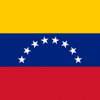Why we can not use only quench water for all feed types here like Liquid feeds and gas feeds etc??
Hi,
This is mostly due to significant difference of TLEs outlet temperature between liquid (Heavy Liquid or Light Naphtha) and gaseous Feedstocks.
In liquid Feedstock, for potential risk of coke formation due to droplet condensation, the TLEs outlet temperature cannot be brought lower than, say, 300C while in gaseous Feedstock such temperature can be well lowered due to lack of the mentioned potential risk.
Hence, it's obvious a high temperature cracked gas of liquid feedstock (~300 C-~600 C) incoming from TLEs cannot directly be quenched by water in a low pressure quench water column and at first has to be quenched with a higher boiling point cooling media, say quench oil, and then by water.
For a lower temperature (less than 200 C) cracked gas from gaseous Feedstock furnace, there would be no need to quench with quench oil and it can directly be quenched with water.
Hope a.m. explanations clarify about the point you are following to know...
Edited by fallah, 25 July 2022 - 05:51 AM.

 FB
FB














